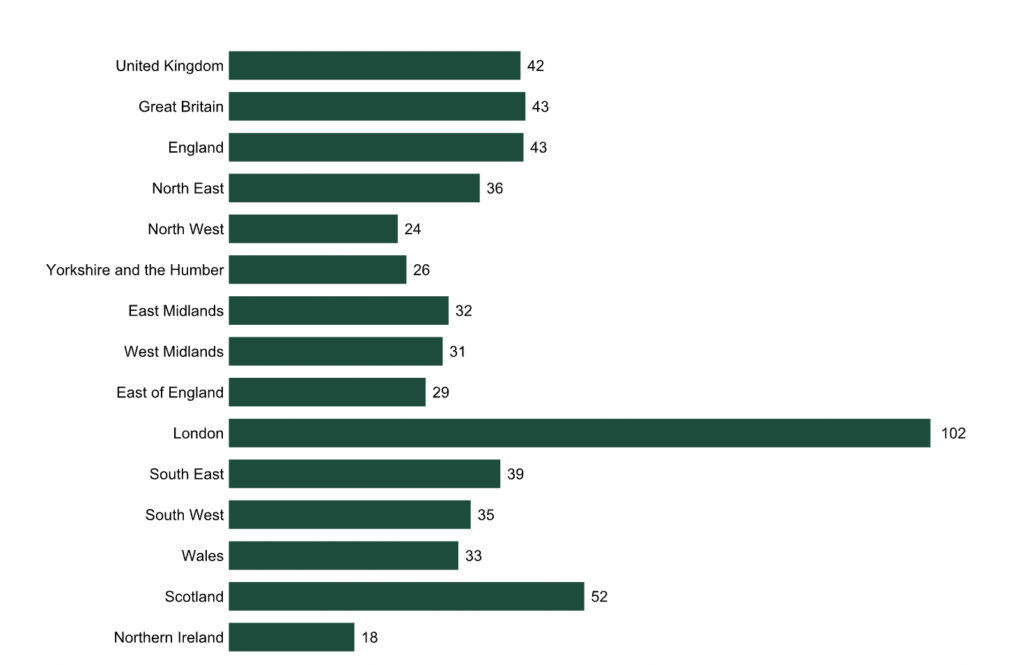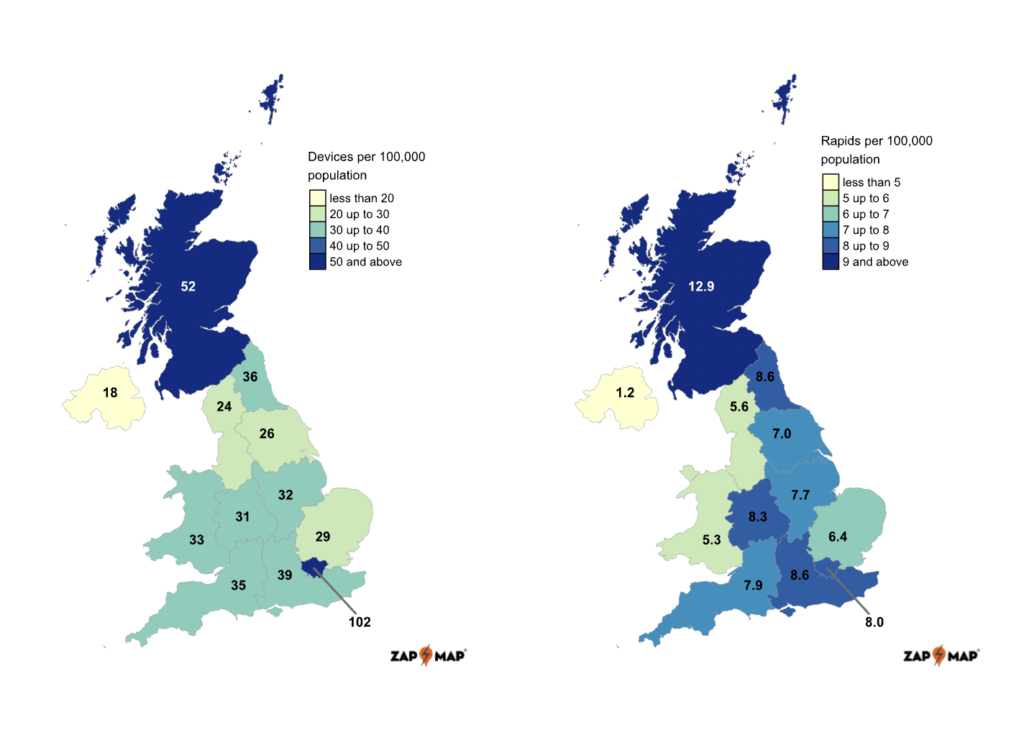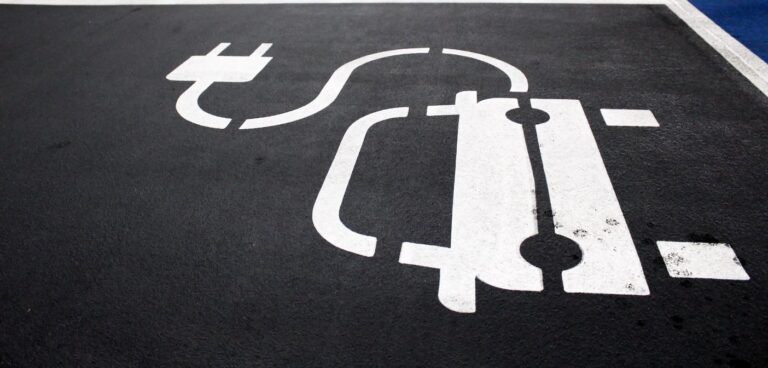The Department for Transport’s latest figures for EV charging devices highlights a growing geographical divide in the number of publicly available chargers – with London and Scotland leading the way, while Northern Ireland and the North West lags behind.
The statistics on the number of publicly available EV charging devices in the UK is broken down by local authority, for between October to December 2021.
According to the DfT, some UK local authorities have bid for UK government funding for charging devices, and others have not. Most of the provision of charging infrastructure has been market-led, with individual charging networks and other businesses, such as hotels, choosing where to install devices.
Read more: Majority of local authorities stalling on EV fleet transition strategies
The below chart shows that London and Scotland had the highest level of charging provision per 100,000 of population, with 102 and 52 devices per 100,000 respectively. In comparison, the average provision in the UK was 42 per 100,000.

Northern Ireland had the lowest level of charging device provision in the UK, with 18 devices per 100,000, followed by the North West and Yorkshire and the Humber with 24 and 26 devices per 100,000 respectively.
Additionally, Scotland had the highest rate of rapid device provision of 12.9 rapid devices per 100,000, whilst the average provision in the UK was 7.7 per 100,000. Rapid device provision was lowest for Northern Ireland and Wales, with 1.2 and 5.3 rapid devices per 100,000 respectively.
However, all regions across the UK did record an increase in total charging devices between 01 October 2021 and 01 January 2022. In total there were 28,375 public EV charging devices available in the UK as of the 01 January, of which 5,156 were rapid chargers. This is an increase of 9% from October and a 5% increase in the number of rapid chargers.

The figures also show that rapid charging devices have increased across every region in the UK. The smallest percentage increase in the number of rapid devices was in the North East at 0.4%. East Midlands had the largest percentage increase in rapid devices at 7.5%, corresponding to an increase of 26 rapid devices.
A spokesperson from the DfT, said: “The number of available devices can fluctuate for a range of reasons. Increases likely reflect the installation of new devices, whilst owners and operators can choose to temporarily or permanently decommission or replace devices. Charging devices can also be unavailable due to faults, maintenance or other restrictions in the area where they are located.”
Read more: Report highlights reasons behind UK EV charging infrastructure slow-down





